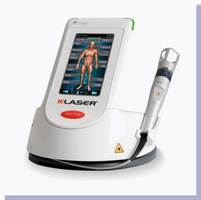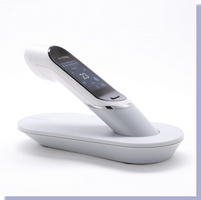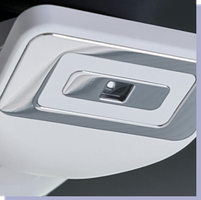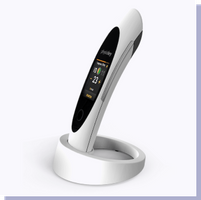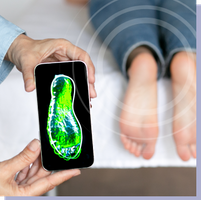“Frozen shoulder” is the clinical term for a condition in which there is a limitation – both active and passive – in the movement of the arm joint, without the cause of this limitation being known. This does not refer to limitation due to pain due to shoulder joint inflammation, fracture, shoulder dislocation, neuromuscular diseases, rupture of the muscle tendon, calcified tendon causing inflammation, etc.
This is stiffness and pain in the shoulder joint that severely limits movement. The development of the phenomenon occurs in stages, with the first stage including severe pain and limitation of shoulder movement, followed by a decrease in shoulder movement caused by the pain, and finally the shoulder becomes very stiff and limited in movement. Additional symptoms can include pain that increases at night or during physical activity. The prevalence of the syndrome is %-2% in the healthy population, and %-10% in the diabetic population.
In fact, the medical literature does not present a uniform terminology for frozen shoulder syndrome, and includes definitions such as adhesions of the shoulder joint capsule, inflammation around the shoulder joint, stiff shoulder, or shoulder impingement caused by its injury. In addition, there is overlap between frozen shoulder syndrome and other pathologies, which further complicates the accurate diagnosis.
Frozen shoulder causes and symptoms
Frozen shoulder is caused when the capsule surrounding the shoulder joint becomes inflamed, thickened, and limits arm movement. Common symptoms include persistent pain in the shoulder and difficulty performing routine activities such as getting dressed or lifting objects.
Among its causes: injuries and trauma, prolonged immobility, diabetes (with a chance of prolonged shoulder limitation in those who have been taking insulin for more than 10 years), middle age (usually appears between the ages of 40 and 70), thyroid disorders, stiffening of the cervical vertebrae, intracranial pathology (patients with paralysis of one half of the body, hemorrhages and intracerebral tumors), chest diseases (chronic bronchitis, emphysema, tuberculosis, lung cancer, ischemic heart disease), and more.
Diagnosing frozen shoulder
The initial examination is a physical one, with the doctor examining the neck, torso, and upper limbs – this is to rule out a problem in the cervical spine or the thoracic-clavicular joint or the acromioclavicular joint. The doctor will check the angle of elevation of the arm and the angle of its removal from the body, and the rotation of the arm.
The best diagnostic test is a CT scan with arthrography (injection of contrast material into the shoulder joint) or an MRI with arthrography. An X-ray usually will not show any problems in the case of a frozen shoulder.
Frozen shoulder treatment
Treatment includes medications to relieve pain and restore movement of the arm.
Physiotherapy: The most common treatment for frozen shoulder. The exercises are designed to stretch the joint capsule and improve range of motion and include gentle stretching exercises to reduce joint stiffness, muscle strengthening exercises to support better arm movement, and regular exercise to promote optimal recovery.
MedicationsOver-the-counter pain relievers are designed to reduce pain and inflammation. In more severe cases, your doctor may recommend corticosteroid injections directly into the shoulder joint to relieve symptoms.
Heat and cold therapy : Hot compresses help relax muscles, and cold compresses help reduce inflammation.
Capsule expansion: A minimally invasive procedure in which sterile fluid is injected into the shoulder joint to stretch the capsule. This method is often used when other treatments do not help.
Surgical interventions: Rarely, when the case is severe, surgery will be necessary. The surgery will involve manipulation under anesthesia in which the shoulder is moved to separate the adhesions in the joint. Arthroscopic surgery removes scar tissue and parts of the capsule that prevent arm movement.
Preventing the problem from recurring
To avoid a recurrence of frozen shoulder, it is important to maintain an active lifestyle and, of course, seek immediate treatment for shoulder injuries. For people with chronic conditions such as diabetes, it is important to manage blood sugar levels to reduce the risk.
While it sometimes takes many months to resolve the frozen shoulder problem, consistent treatment of a frozen shoulder and early intervention significantly improve outcomes and allow most patients to return to full function and full mobility of the arm, thus of course restoring their quality of life.
Frozen shoulder treatment with the most advanced technology
MEDKEY technology treatment at Q-room works in several ways that can improve range of motion and speed up recovery:
- Pain reduction: The treatment helps reduce pain signals sent to the brain, thereby reducing the sensation of pain. The treatment helps patients move the affected area more freely and without fear of pain.
- Endorphin release : MEDKEY technology treatment Encourages the body to release endorphins, which are natural pain relievers. The release of endorphins helps reduce pain and makes it easier to continue treatment with exercises to improve range of motion and strength.
- Muscle relaxation : Q-ROOM treatment helps relax stiff and contracted muscles around the affected area, which accelerates improvement in joint movement.
- Improving blood circulation: Q-ROOM treatment helps increase blood flow to the treated area. Improved blood flow delivers oxygen and nutrients to damaged tissues, helping the body begin the natural healing process.
- Reducing inflammation and swelling: Electrical stimulation therapy can help reduce inflammation and swelling in the affected area. Treating inflammation helps reduce pain and improve range of motion.
- Reduces shoulder calcification – the treatment improves blood circulation, thus leading to cell regeneration and oxygen flow that accelerates the healing process.
The treatment protocol, developed with teams in Australia and Germany, helps regulate and balance the nervous system. Therefore, Q-room treatment can help reduce pain and relieve other symptoms associated with frozen shoulder.

